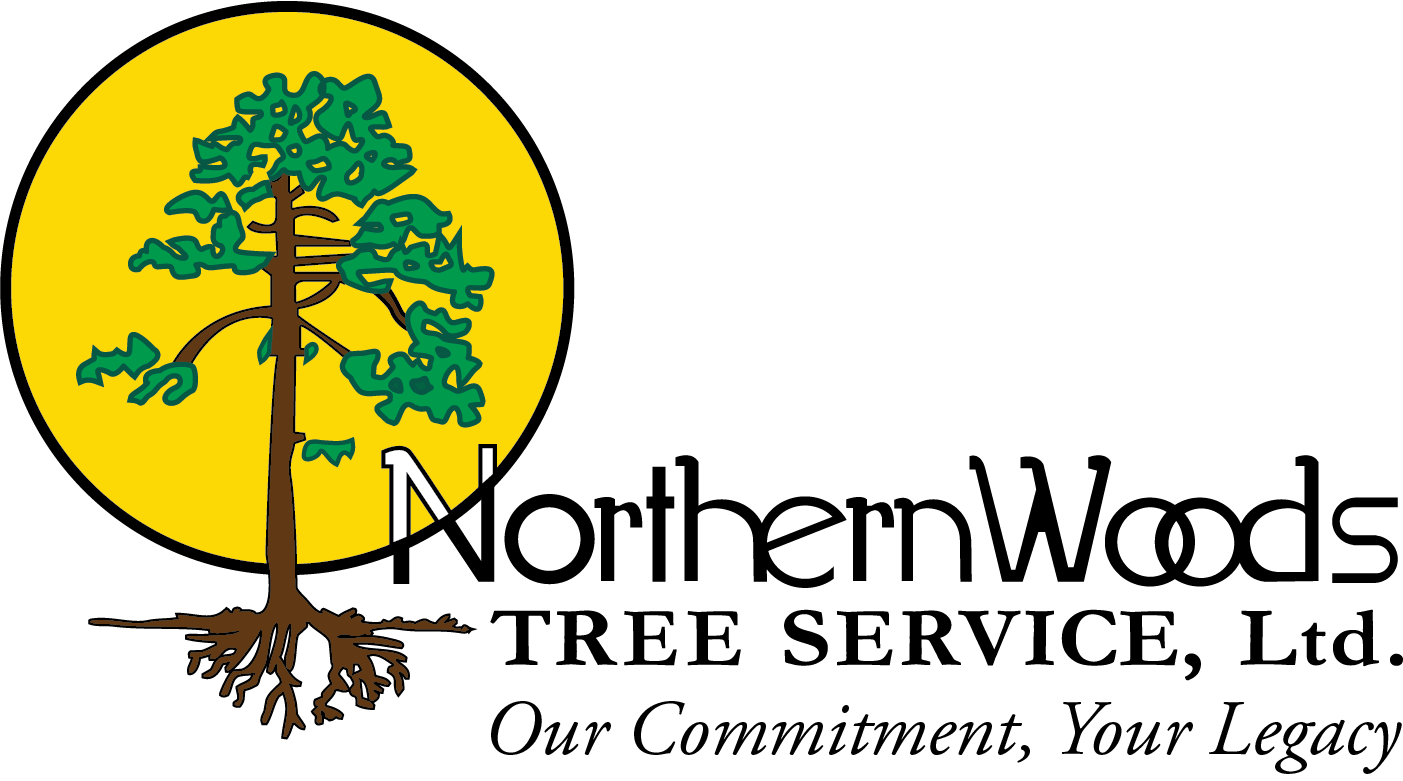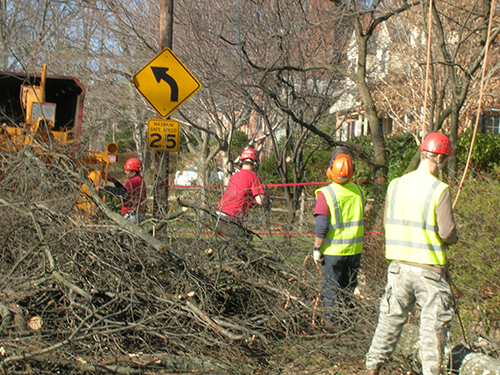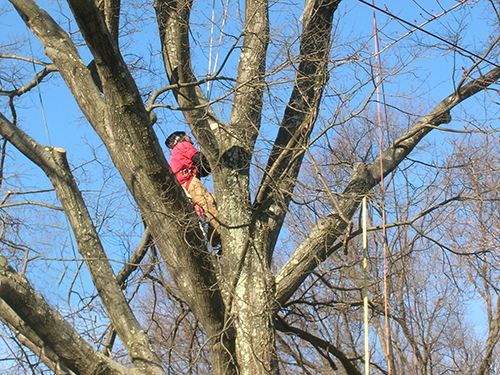Trees require periodic pruning for health, safety, and visual reasons. Proper pruning is undoubtedly the most important single decision you can make for your trees. Improper pruning, on the other hand, can jeopardize their health, stability, and esthetic beauty. Many factors contribute to pruning decisionsÖhere are a few:
Dead wood: It is always prudent to remove dead limbs as they represent a safety hazard and can cause considerable damage when they fall. Dead limbs also compromise the health of the tree by providing an avenue of infection into healthy tissues. The infected and decaying tissue of a dead limb prevents the formation of protective callous tissue at the point of its intersection with living tissue. Decaying organisms living on the dead limb then have an opportunity to wick into the living tissues of the remaining tree to which it is attached, thereby causing further decay.
Foliage: The amount of foliage (leaf mass) to be removed needs to be evaluated and prescribed based on the specific individual needs of each tree. Different species have different pruning requirements and parameters. For example, removing a large quantity of photosynthetic (leaf) area on a deciduous tree in the heat of the summer can cause considerable stress to that tree, whereas performing the same procedure in the dormant season is much less invasive.
B. The size and angle of the pruning cuts: Both of these are critical and relate directly to how quickly and effectively the pruning wounds callous over. Trees do not "heal" from wounds, even pruning cuts, they consume these wounds. In reality, the larger the wound, the more time (years) it will take to completely heal over thus exposing it to infection longer. Making numerous smaller pruning cuts is much less invasive than cutting off a large limb. If a stub is left remaining, the callous tissue surrounding that limb cannot form closure to protect the wound area. If the wound is made too close (flush cut) the wound will be larger and take much longer to close over. The wound may never be consumed. The wound then festers and decay proceeds to attack the remaining tissues.
C. Timing: Dead limbs can be removed at any time of the year and should be removed sooner than later. Heavy foliar pruning and crown reductions are best performed when the tree is dormant. Northern Woods will custom tailor the pruning procedure specifically appropriate for each of your trees.
Specific Pruning Procedures:
- Crown Cleaning
- Crown thinning
- Crown Reduction
- Hazard Pruning
- Crown Restoration
- Crown Elevating / Raising
Crown Cleaning: Practice of removing dead, diseased, crowded, weakly attached, and low-vigor, and crossover limbs.
Key Benefits:
a. Contributes to a healthier canopy by routing nutritional resources to help sustain and improve vigor of the more beneficial remaining branches.
b. Provides an aesthetically pleasing appearance to the tree and adds value to your landscape.
Crown Thinning: Practice that begins with crown cleaning and adds the selective removal of specific branches to increase sunlight penetration and reduce wind resistance.
Key Benefits:
a. Reduces risk of storm damage by reducing weight and leverage of vulnerable limbs in the canopy.
b. Increases sunlight percolation through the canopy and improves survivability of grass and understory plantings beneath.
Crown Reduction: A procedure of selectively pruning back large structurally unsound limbs to reduce danger of fracturing. This is fairly invasive pruning and is usually performed in lieu of removing the entire tree. This procedure reduces the treeís overall size by reducing weight and leverage then we sculpt the tree to achieve an esthetically pleasing shape.
Key benefits:
a. Improves the structural integrity of the tree
b. Preserves the tree as an asset to your landscape instead of removing it.
Hazard Pruning: Removal of major dead and weak or fractured branches that pose a high risk of structural failure. This procedure is typically performed on regressing trees.
Key Benefits:
a. Eliminates large, hazardous limbs that pose an imminent threat to targets below
b. Less costly procedure than thoroughly pruning the entire tree yet eliminates the major threats.
Crown Restoration: Re-pruning of trees that have been improperly pruned in the past. These improper cuts often produce ìwater sproutsî or ìsucker limbs.î The leaves from these densely-foliated offshoot limbs catch a lot of wind and, since they are weakly attached to the tree, they are consequently more prone to fracturing in heavy weather. These limbs also ìsuckî valuable nutrients that could otherwise be nurturing more desirable limbs. Crown restoration selectively culls out the undesirable limbs, leaving the healthier, more sound ones to improve the treeís structural framework.
Key Benefits:
a. Reduces potential vulnerability of weakly attached limbs while keeping the integral shape of the tree.
b. Often (usually) performed in conjunction with crown cleaning and/or thinning to further improve structure.
Crown Elevating/Raising: Procedure of removing or pruning back low hanging or encroaching branches to provide needed clearance for people, structures, vehicles, and/or esthetic reasons.
Key Benefits:
a. Acquire space needed for clearance to prevent intrusion
b. Prevent rubbing (abrasion) against buildings, etc. (bad for what itís rubbing against and bad for the tree as it can scrape the bark and cause infection.
c. Deters animal access to roofs of buildings
d. Provides a clean, balanced look to the treeís canopy





